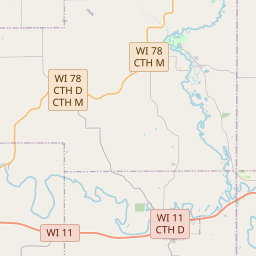First Methodist Episcopal Church
Historical marker location:
1315 11th Street, Monroe, Wisconsin
( Marker is at the intersection of 11th Street and 13th Avenue, on the left when traveling east on 11th Street.)
Marker installed: 2007







© OpenStreetMap contributors
Green Bay is the oldest continuously settled town in Wisconsin, dating back to the early 1600s.
About Green County
Green County Timeline
Green County, Wisconsin, is located in the southern part of the state and has a rich history that dates back to the 1830s. The area was originally inhabited by Native American tribes, including the Winnebago and Potawatomi tribes. However, as settlers began to move into the region, the Native American population gradually declined.
In 1836, Green County was established and named after General Nathanael Greene, a hero of the American Revolutionary War. The county experienced rapid growth in the mid-19th century due to the introduction of the railroad, which facilitated transportation and trade. The arrival of the railroad brought new opportunities for commerce and industry, leading to the establishment of towns and villages such as Monroe, the county seat.
Agriculture played a significant role in the development of Green County. The fertile land, abundant water sources, and favorable climate made it ideal for farming. Immigrants from Europe, particularly Swiss and German settlers, were attracted to the region's agricultural potential. These settlers brought with them their farming techniques and traditions, leading to the development of dairy farming, cheese production, and other agricultural activities that continue to be central to the county's economy.
Over the years, Green County has experienced various milestones and transformations. The county has seen the growth of educational institutions, the expansion of infrastructure, and the development of cultural and recreational opportunities. Today, Green County remains an important agricultural hub in Wisconsin and is known for its picturesque rural landscapes, vibrant communities, and strong sense of heritage.
In 1836, Green County was established and named after General Nathanael Greene, a hero of the American Revolutionary War. The county experienced rapid growth in the mid-19th century due to the introduction of the railroad, which facilitated transportation and trade. The arrival of the railroad brought new opportunities for commerce and industry, leading to the establishment of towns and villages such as Monroe, the county seat.
Agriculture played a significant role in the development of Green County. The fertile land, abundant water sources, and favorable climate made it ideal for farming. Immigrants from Europe, particularly Swiss and German settlers, were attracted to the region's agricultural potential. These settlers brought with them their farming techniques and traditions, leading to the development of dairy farming, cheese production, and other agricultural activities that continue to be central to the county's economy.
Over the years, Green County has experienced various milestones and transformations. The county has seen the growth of educational institutions, the expansion of infrastructure, and the development of cultural and recreational opportunities. Today, Green County remains an important agricultural hub in Wisconsin and is known for its picturesque rural landscapes, vibrant communities, and strong sense of heritage.
Green County Timeline
This timeline provides a concise overview of the key events in the history of Green County, Wisconsin.
- 1837 - Green County is established by an act of the Wisconsin Territorial Legislature.
- 1839 - The first log cabin is built in Green County by William Blackshare.
- 1841 - The first permanent settler, Oliver Harmon, arrives in Green County.
- 1842 - The first schoolhouse is built in Green County.
- 1850 - The construction of a courthouse begins in the newly designated Green County seat, Monroe.
- 1860 - The railroad arrives in Monroe, providing a boost to the county's economy.
- 1894 - A devastating tornado strikes the town of New Glarus, causing significant damage.
- 1918 - The Spanish flu pandemic hits Green County, resulting in numerous deaths.
- 1933 - The Green County Historical Society is formed to preserve the county's history.
- 1950s - The construction of the Green County Courthouse Annex and Jail takes place.
- 2010 - The population of Green County reaches over 36,800 residents.